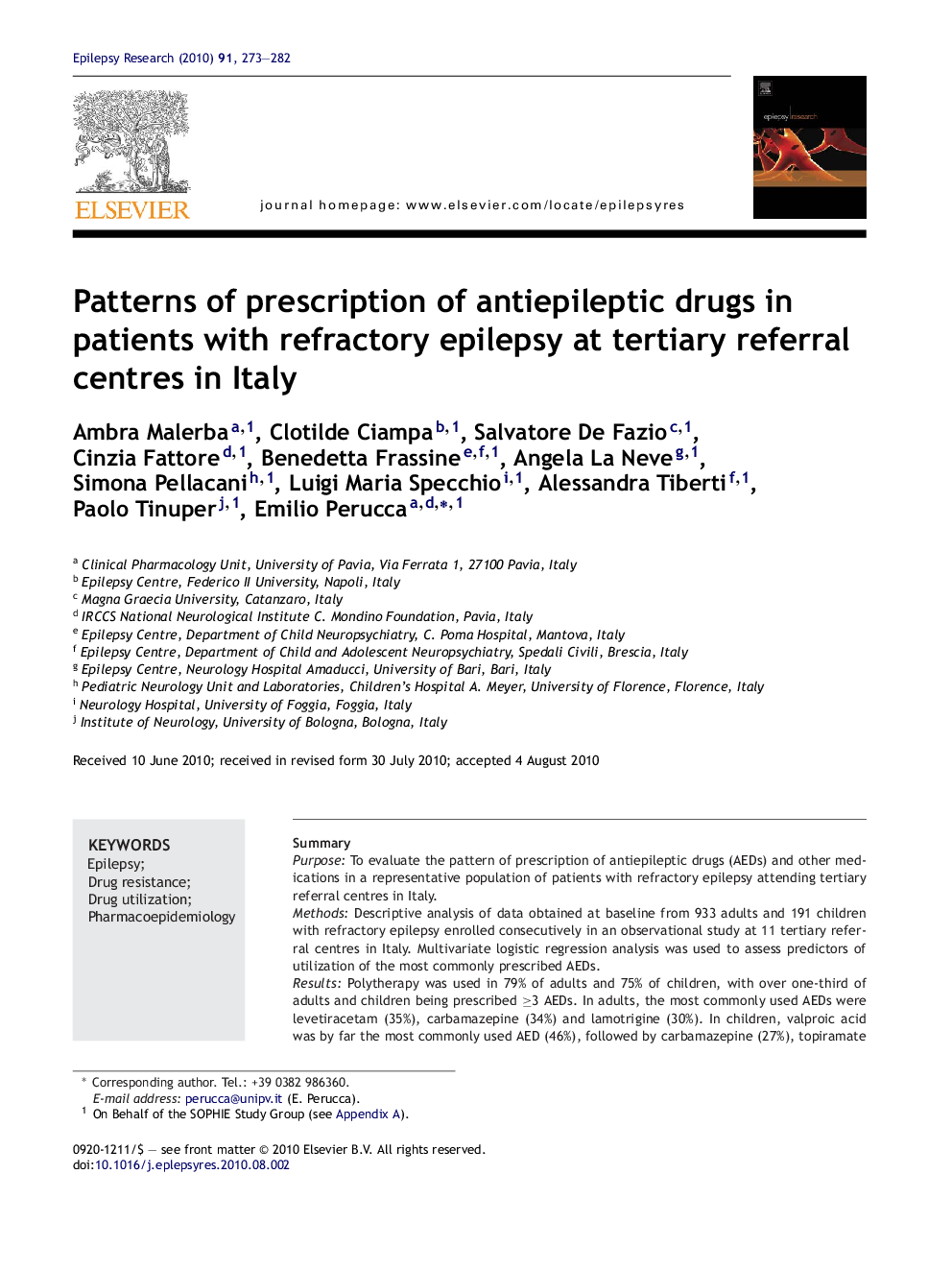| کد مقاله | کد نشریه | سال انتشار | مقاله انگلیسی | نسخه تمام متن |
|---|---|---|---|---|
| 3052588 | 1579932 | 2010 | 10 صفحه PDF | دانلود رایگان |

SummaryPurposeTo evaluate the pattern of prescription of antiepileptic drugs (AEDs) and other medications in a representative population of patients with refractory epilepsy attending tertiary referral centres in Italy.MethodsDescriptive analysis of data obtained at baseline from 933 adults and 191 children with refractory epilepsy enrolled consecutively in an observational study at 11 tertiary referral centres in Italy. Multivariate logistic regression analysis was used to assess predictors of utilization of the most commonly prescribed AEDs.ResultsPolytherapy was used in 79% of adults and 75% of children, with over one-third of adults and children being prescribed ≥3 AEDs. In adults, the most commonly used AEDs were levetiracetam (35%), carbamazepine (34%) and lamotrigine (30%). In children, valproic acid was by far the most commonly used AED (46%), followed by carbamazepine (27%), topiramate (21%), and phenobarbital (20%). The most common AED in partial epilepsy was carbamazepine (331 out of 893 patients, 37%), followed by levetiracetam (33%) and lamotrigine (26%). In generalized or undetermined epilepsies, the AEDs most commonly used were valproic acid (139 out of 223 patients, 62%), lamotrigine (33%) and levetiracetam (28%). Second generation AEDs were prescribed in 81% of adults and 54% of children. Comedications used for indications other than epilepsy were used by 32% of adults and 17% of children.ConclusionsPrescription patterns were consistent with current evidence about the spectrum of efficacy of individual AEDs in different epilepsy syndromes. The high prevalence of polytherapy, including combinations of three or more AEDs, is a cause for concern.
Journal: Epilepsy Research - Volume 91, Issues 2–3, October 2010, Pages 273–282